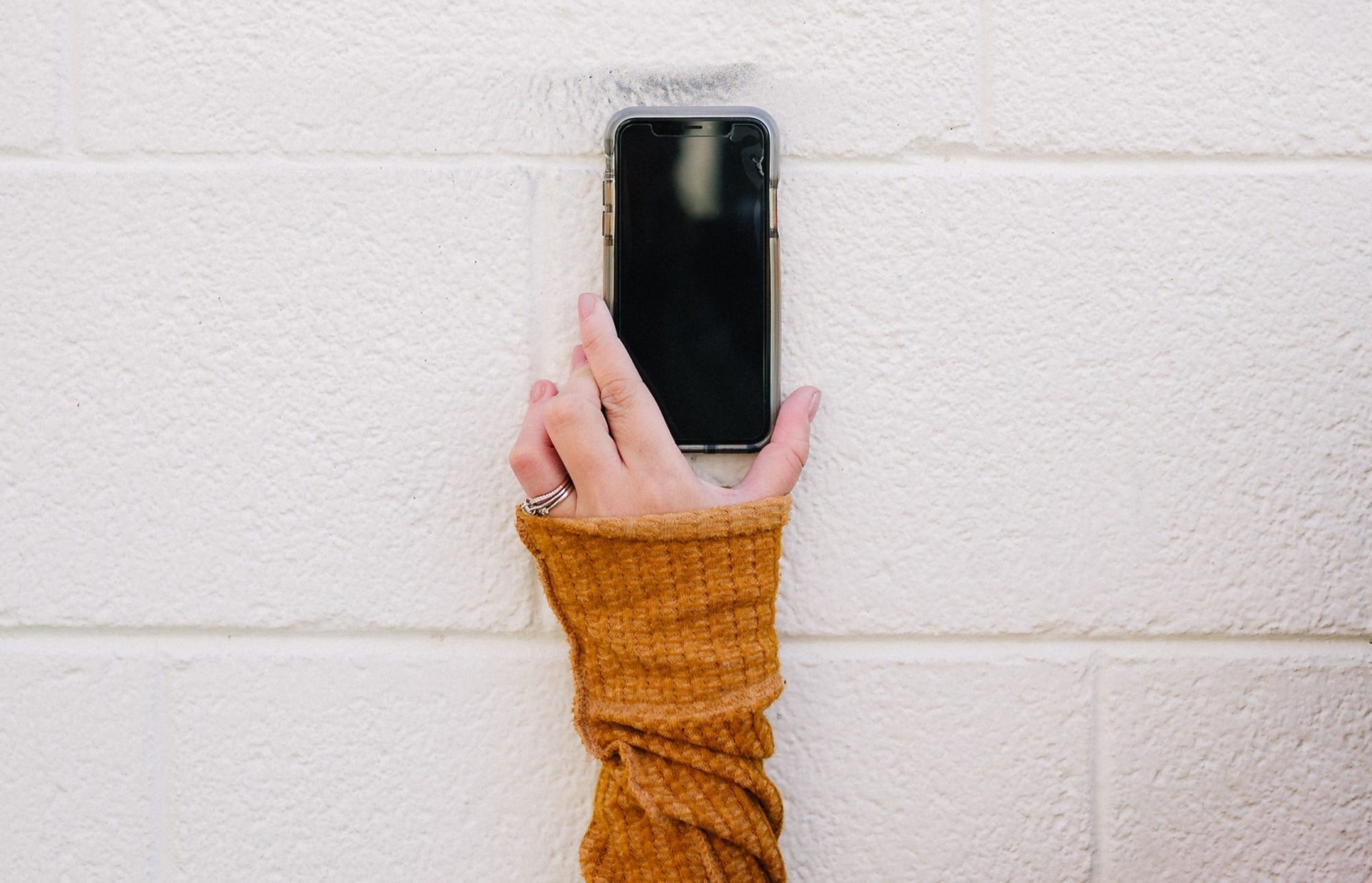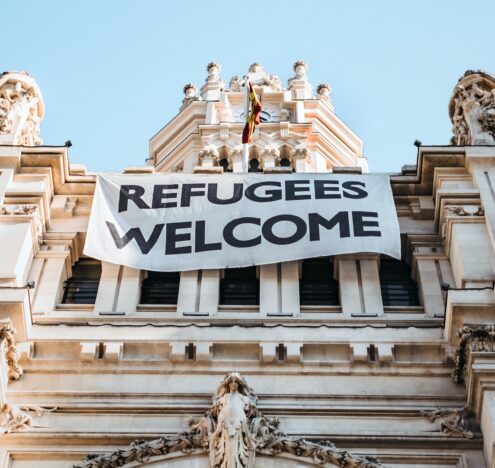Unless you are living under a rock, you have likely heard about the violent siege/riot/coup/insurgency (whatever you are choosing to call it) that took place at the US Capitol on January 6, 2021. The attack was organized and led by avid Trump supporters and resulted in the deaths of five people. The events of January 6, 2021, were unprecedented and traumatic.
For many Americans, the events of the siege played out across social media platforms. Many people, like myself, tried to learn more about what was going on at the Capitol by doomscrolling (a term that should have been deemed runner-up for Merriam-Webster’s “2020 Word of the Year”). Doomscrolling is the act of continuously scrolling through social media feeds despite the fact that the events playing out on your screen bring you nothing but a sense of doom, and then refreshing your feed and repeating. As the country collectively doomscrolled, calming phrases like “coup” and “civil war” started to trend on Twitter. Mere hours after the event, memes became as prolific as breaking news updates.
This is not a new phenomenon. In fact, exactly one year before the events at the Capitol, I wrote a piece about the memeification of international security. Given the outpouring of memes following the January 6 events, I decided to replicate my previous meme analysis. With this 2021 study, however, I sought to better understand the question: what does a digital response to a national (security) crisis look like?
METHODOLOGY
Like my previous analysis, for this study, I focused on memes that were created and distributed on digital mass communication platforms. Memes were collected from platforms including Twitter, TikTok, Reddit, Facebook, Instagram, Imgur, and 4Chan. Because of my social media history and established algorithms, it is likely that there is a bias in the digital content I encountered. To try and correct this bias, I visited sites I previously hadn’t used (i.e. 4Chan). To collect more memes from more diverse audiences, I submitted calls for meme submissions on Twitter and in digital interest group communities I am involved in. As a side note, I have found that it does not make sense to try and deploy a bot for meme collection as it would have to be deployed incredibly fast, across multiple websites and platforms, and it would have to be effective at image recognition given most memes are in image, Tweet, or video formats.
Using my monitoring and crowdsourcing methods, I collected approximately 760 memes and other pieces of relevant digital content in 72 hours. This is 24 hours longer than my last collection period with approximately 400 more memes. This rise in the number of memes could be due to multiple factors, such as the extra 24 hours of collection, and/or the fact that the 2021 events happened on American soil, whereas the January 2020 memes were about events that occurred in Iran.
THE LIFE CYCLE OF A MEME
The life cycle of a meme tends to vary with what is being “memed.” Generally speaking, meme life cycles have the following characteristics in common, regardless of the event (or person/place/thing) being made into a meme. Based on my analysis, if something is going to become a meme, the first memes or humorous responses are born on social media minutes after exposure to the meme-inducing event or thing. Once one or two relevant memes pick up traction, more memes of a similar nature are born. A few reasons memes are enjoyable forms of communication are because: they can easily be replicated (with slight variation to yield fresh content) and they pave the way for new (and potentially funnier) punchlines. A meme’s life cycle tends to peak five to ten hours after social media platforms first come across the memeable impetus. It is during this peak that there are the highest number of new memes, and when the memes that were created closer to the impetus pick up sizable traction. (Traction meaning user engagement such as likes and shares, as well as distribution across social media platforms).
As this analysis shows, sometimes, the only way to cope with the absolute absurdness of our new reality, is through the cathartic power of memes. It is clear that memes can provide more utility than just catharsis. Memes are, and will continue to be, an important and effective form of communication.
The internet, however, has a short attention span. After the peak, the meme life cycle starts to go downhill and less new and unique memes are being made. It is right after the peak that memeception also occurs — or when memes about how many memes there are — become popular. Approximately one to two days after the memeable occurrence, social media users are most likely to come across the memes that were made during the peak period. During this time frame, the older memes (or memes that were made closer to the memed event) continue to gain interactions and engagement, whereas new memes made during this downfall are less likely to do as well. It is during this initial downfall that people start to say “I’ve seen that” after being shown a meme with growing frequency. The meme life cycle tends to come naturally to a close around three days after the initial event. Unless, of course, the meme motivation was particularly ridiculous. At the end of the three day life cycle, the memes that were created in response to a specific event or thing are less popular on social media both in terms of engagement and humor (i.e., the older the meme, the less likely it is to elicit a response).
Meme life cycles ebb and flow with news cycles, and sometimes meme life cycles can interrupt other meme life cycles. For example, a few hours prior to the January 6 storming of the Capitol, memes about rumors regarding Jeffree Star and Kanye West had just begun to appear. Given the events at the Capitol, however, the Jeffree-Kanye meme life cycle was cut drastically short. Similarly, two days after the Capitol’s siege, on Friday, January 8, 2021, Twitter announced it was suspending Trump’s account. This event arguably cut the Capitol meme life cycle short as new memes, more specific to Trump’s Twitter use began to emerge.
THE THEMES
From my dataset, I observed the following thematic trends: political memes, historical memes, conspiracy theory memes, memes about the lack of security, memes about fatigue, memes about people at the event, and memes highlighting the hypocrisy of the event policing. While memes about Capitol security were arguably the most popular, my analysis will focus on the memes about the people at the event, the hypocrisy, and fatigue.
The People at the Event: The storming of the Capitol was a truly unique event in that, some of the people that stormed the Capitol were so ridiculous, they themselves became a meme template. Perhaps the best example of this phenomenon was the shirtless Q-Anon conspiracy theorist with a painted face and horned fur hat. Most of the memes that utilized this misinformed marauder were in jest of how ridiculous he is. Reporter Kyle Daly observed that this ostentatious display of ridiculous outfits had the intended goal of becoming a meme, and this trend is becoming typical of far-right meme culture. Similarly, the man who decided to wield his white privilege to loot Nancy Pelosi’s lectern also quickly became a meme template. These memes tended to highlight histories of colonialism and white privilege. The memeification of the people who stormed the Capitol can demonstrate that sometimes, the most popular digital response is created using content from the thing the meme itself is referring or responding to.
The Hypocrisy: One of the factors that made the storming of the Capitol so shocking was how the January 6 events compared to the Black Lives Matter (BLM) protests from the summer of 2020. As a DC resident, it was horrifying to watch protesters breach the Capitol with minimal security and policing in juxtaposition to the heavily militarized response of the peaceful protests that happened only six months prior. Comparatively speaking, the January 6 events were more violent and more disruptive than the BLM protests, and were met with less policing, less tear gas, less armored vehicles, and less helicopters. This difference in response quickly became a meme, highlighting just how disproportionate the respective responses were. Other memes about the hypocrisy of the events at the Capitol dealt directly with what Trump (or MAGA) supporters had previously claimed to stand for (i.e. law and order) and against (i.e. looting). For example, some memes that emerged noted how ironic it was that some of the Capitol rioters were carrying “blue lives matter” flags as they broke the law and stormed the Capitol. Other memes referenced how during the BLM protests, many MAGA supporters claimed that “when the looting starts, the shooting starts” but then looted the Capitol themselves.
The Fatigue: Popstar Lil Nas put it best, stating “why is twitter always at its funniest when the world is collapsing.” 2020 was a hell of a year for everybody. A violent siege of the US Capitol six days into the new year does not bode well for 2021 either. And people are tired. Many memes that followed in the wake of January 6 spoke to how draining the events were. The memes paid tribute to forfeited Dry Januarys and acknowledged how, at a fundamental level, it was the same shit, different year. One year ago, I wrote about how the next generation uses humor to deflect from the constant and uninterrupted stream of bad news and crises, and it seems as if the stream of bad news has yet to be interrupted. If the past hell year has taught us anything, it has shown that memes continue to be a coping mechanism and will likely continue to be one for the foreseeable future.
THE TAKEAWAYS
“It’s been one week.” That’s it. That’s the meme.
And the first week of 2021 was exhausting and traumatic. As this analysis shows, sometimes, the only way to cope with the absolute absurdness of our new reality, is through the cathartic power of memes. It is clear that memes can provide more utility than just catharsis. Memes are, and will continue to be, an important and effective form of communication.
The types of memes being created in response to national security events can provide us with a great deal of information about the people behind the social media profiles. By assessing the themes of memes, and what makes memes popular, we are able to get a better understanding of how most folks (especially non-national security experts) react and respond to security crises. It is also evident that memes are evolving. That Q-Anon Capitol rioters dressed in ridiculous outfits with the intended goal of becoming a meme is indicative of an emerging trend in meme culture. While memes are quite frequently political in nature, the act of purposefully dressing or acting preposterously in order to gain notoriety through memeification, thereby also gaining the opportunity (or platform) to spread your political beliefs or ideology, is a new dimension of meme culture that will likely become increasingly popular in the coming years. Lastly, this analysis has shown that memes have an incredibly short life cycle. The most attention-grabbing and “viral” digital responses to events often happen in meme form mere hours after the event. This rapid response time frame, paired with the short digital life cycle of popular reactive content, suggests that if someone wanted to deploy their own type of digital communication in response to an event, the response should be quick and straightforward, mirroring the style of the trending memes at that time.





















